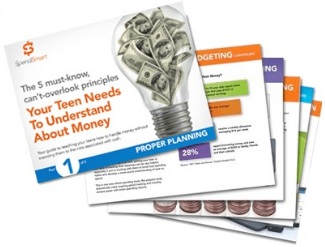Real Talk: Ep. 2 - Justin Bieber "Cash for College"
Real Talk Tip #1
Make a budget
Budgets are not just for monthly expenses, but can be used for any occasion where being money conscious is important (such as planning a birthday party). Making a budget before a shopping trip allows shoppers to get a handle on how much money can be spent and what it needs to cover. It also helps to prioritize purchases and clearly distinguish between wants and needs.
Make a list
Doing this simultaneously with the shopping budget will help identify what is needed, and provides focus. No matter what kind of shopping a person is doing, making and bringing that list with you is key. Nothing can lead to splurging quite like aimlessly walking around a store without a purpose. From buying groceries to clothes, knowing what you are looking for in advance can help cut down on accidental excess spending.
Shop around
Be patient, comparison shopping has many rewards. A product that costs an arm and a leg at one retailer may be half the price at another, making it well worth it to shop around. Also, ordering something online may result in greater savings than buying it in person. While the wait may be longer, the money saved can make whatever’s been bought that much sweeter.
Look for deals. Whether in the store or online, businesses are always trying to attract customers with special sales. By seeking out deals, people can save big on all kinds of purchases. Whether it’s a coupon in the Sunday paper or a going out of business sale, bargain hunters can find items they want, as well as keeping some money in their pockets.
Time it right
That being said, certain deals only happen at specific times of the year. For instance, winter clothes are significantly reduced in price when the weather warms up, so buying next year’s winter wardrobe during spring and summer can be an easy way to save. Another example is back to school sales. Many stores try to outdo one another on all the products young people will be looking for when school goes back in session. Holding off on or speeding up a shopping trip can make all the difference. (Don’t forget your shopping list!)
Learn to thrift
Besides being a great source for Halloween costumes and theme party duds, thrift stores can be a treasure trove of deals on everyday and current items. In fact, many thrift stores feature brand-name products at greatly reduced prices. Remember to look at thrift stores as an alternative for what they are: An opportunity to buy more for less.
Don’t be afraid to return
If something doesn’t work once you get it home – whether it’s a piece of clothing that doesn’t fit right or a gadget that won’t turn on – never be afraid to take it back. This will be a lot easier to do if you save your receipts and are careful not to remove tags or completely damage packaging. Hate dealing with customer service returns? Think about the money wasted on something you don’t like or want, consider what else you can do with those funds, and go get your money back!

Get our Real Talk eBook Series
For just $1.00, you get a one year subscription to our insider’s downloadable eBook series.
It contains straight-talking tips covering the best ways to teach your teens about financial responsibility.

